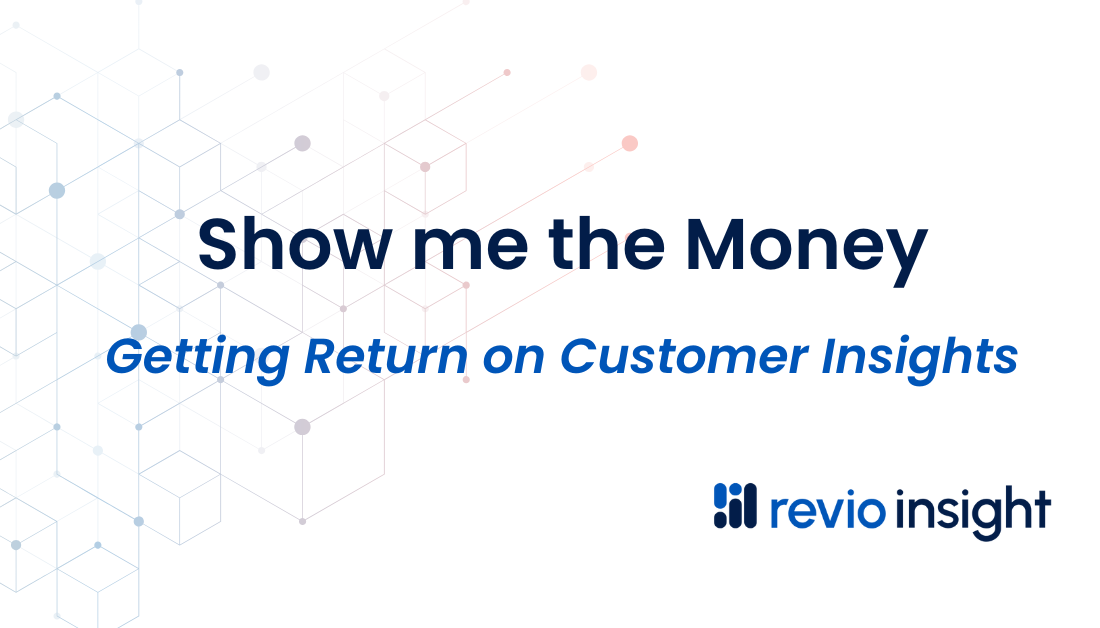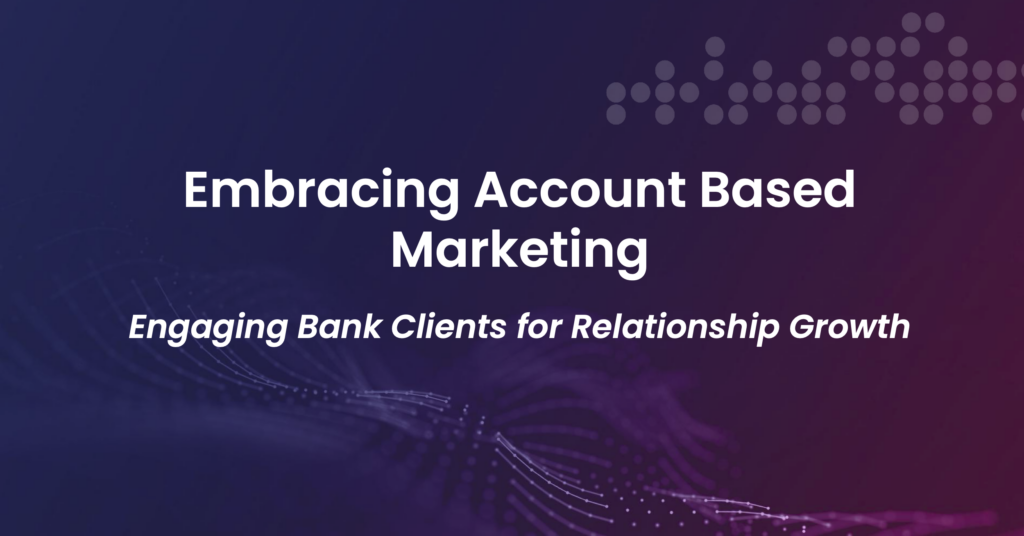“How do we measure a return on investment?” is one of the most common questions we hear when it comes to customer insights. A decade of promises on “analytics” solutions in the banking industry has left the industry skeptical. Too often tactics that work in other industries don’t align – sometimes due to economics and sometimes due to the market dynamics of financial services.
However, because of the rise of competitive forces it’s never been more clear that we need to know more about our customers and work to maximize the value of our relationships across the spectrum of opportunity, from deposits, to non-interest income, and lending. We need to understand customer needs and how to meet them. We can’t be everything to everyone, but we do need to differentiate.
Without a deep understanding of our customers, a compass to guide the way, how do customer insights help navigate this challenge?
Insight vs Visualization
Insights, analytics, etc. No matter what you call it, actionability matters. Analytics can serve many purposes: compliance reporting, fraud detection, peer analysis, trend analysis, or customer insights.
Let’s take the case of trend analysis. Data visualization is a great way to spot trending events and gaps. However, most visualization provides a presentation layer that helps users visually understand and attempt to contextualize data or information. But that information must be synthesized by a human first prior to any action being taken.
Insights developed through data enrichment, on the other hand, provide analysis results with contextualization built in. Instead of visualizing the trend, actionable opportunities linked to the trend emerge. Enrichment is the princess of adding contextual elements to the data. Whereas visualization may show account fluctuations, enrichment would identify transactions that tell us something about the customer.
Here is another way to describe the difference: If visualization helps us understand the level and rate of rising water in our sinking boat, an insight would identify exactly where the holes in the boat are located and which ones need to be patched first.
The Business Purpose Matters
Regardless of the type of analysis, it is important to start with the right question for the problem you are looking to solve. Whether visualization or insights, the business purpose matters. Ultimately this boils down to cost-benefit and actionability. It’s critical that the business purpose be cohesive in the analysis, otherwise it’s just nice-to-have information.
Three questions we think are important:
- What action does the insight enable?
- At what level will the action be taken?
- What are the intended business outcomes?
Customer Insights – Aggregate Analysis Results
In a May 2024 study analyzing the customer data of 11 community and mid sized banks with core deposits totalling $15.7 billion, Revio detected a total of $9.2 billion in unmonetized annual customer opportunity across deposit transfers, commercial credit card, loan refinance (payments, not loan balance), retail credit card, and mortgage (payments, not loan balance). On average, for each $1 billion in core deposits for the 11 banks in the study, Revio detected $585,251,854 in annual lost deposits or unmonetized opportunity.
Getting to ‘Return on Insight’
For a $6 billion in core deposit bank, drawn from a different study in Q3 2023, just a 1% opportunity capture across external deposit transfers, merchant services, credit card, and loans equated to over $2 million in additional fee and interest income potential, with 3rd year annual income projected at just under $1 million. The compounding effect of modest customer growth, even when factoring in 10% annual income attrition (as this pro forma does), is impactful.
Opportunity Summary Based on Customer Analysis
Deposit Transfers: $266 million
Merchant Services: $1.2 billion
Credit Card: $893 million
Loan Payments: $262 million
Pro Forma Income Results
based on 1% opportunity capture

Additionally, and what the results analysis fails to fully appreciate, is the greater profitability of both retail and commercial customers with multiple services. More products equals longer customer lifetimes and greater lifetime value.
A separate bank, with approximately $2.5 billion in core deposits, also showed considerable opportunity, this one drawn from the May 2024 study.
Opportunity Summary Based on Customer Analysis
Deposit Transfers: $193 million
Merchant Services: $801 billion
Credit Card: $406 million
Loan Payments: $186 million
Pro Forma Income Results
based on 1% opportunity capture

Turning Insight Into Action
Sunwest Bank found a sizable opportunity in their commercial card program, which led them to launch their Visionary Card program with Torpago. From conducting competitive analysis to targeting the launch of the card and relationship building campaign, Revio’s insights served to guide both product and relationship engagement on a card program that now boasts tens of millions of dollars in annual card volume and is growing.
Targeted relationship building campaigns are effective, especially for community or mid-sized banks that rely on a hybrid of technology and relationship banking. This is especially true for managing commercial relationships. Often, banks are aware of their largest customers, the ones who have the most products or services, and actively engage these clients. Insights enable bankers to also engage based on unmet or externally met needs, which is where the growth opportunity exists. By focusing engagement on high-growth potential clients, bankers can efficiently and effectively strategize and engage clients with the best growth potential.





